We help to choose polycarbonate for canopy depending on the thickness, color and type of material: monolithic or cellular.
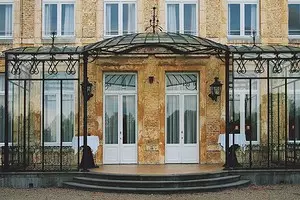
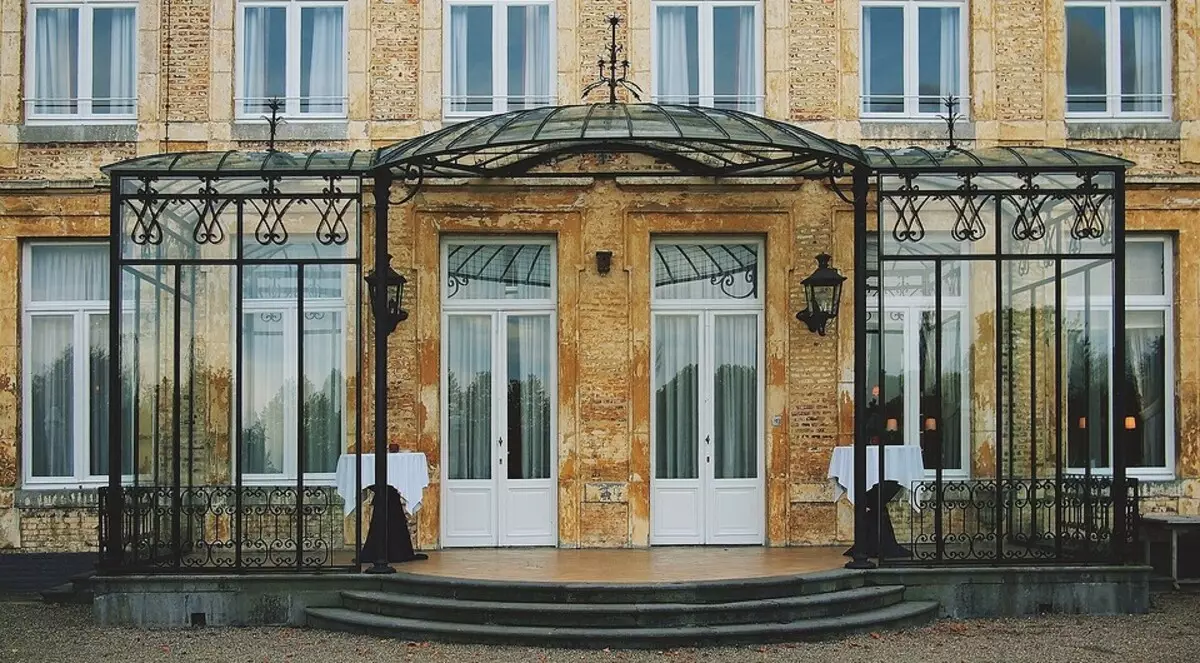
So how to choose a polycarbonate for a canopy, what better? In the article, consider three criteria: type of plastic, its size and color. First we will understand in the characteristics of the types of products that the construction market offers. And in the end we will give several tips on installing panels.
We choose polycarbonate for canopy:
Types of plastic- Monolithic
- Cellular
Optimal thickness
- For monolithic
- For cellular
Color
Installation rules
Output
Polycarbonate varieties
Products can be made of primary or secondary raw materials. The first type of material is more durable, resistant to burnout, frost and heat. The second is worse in quality, but cheaper at the price. In addition to this classification, there is another one - it also includes two types of panels.
Monolithic
Solid, straight or wavy canvas. The second option is sometimes called the "transparent slate". Such plastic can be transparent, translucent or color. In appearance and some technical characteristics, it looks like silicate glass.Pros:
- Great absorbs sound, skips light.
- Withstand low and high temperatures.
- Weigh 2-3 times less glass.
- It is difficult to break it. This is especially true of goods with marking PC-1, PC-2, PC-M-2, PC-LST-30.
- There are no cells inside, so there are no problems with moisture resistance.
- The minimum term of use is 10-15 years old, subject to installation rules and a properly selected polycarbonate size for a canopy.
- Such sheets easier to use round roofs. They easily take the desired bend (the degree of plasticity depends on the thickness).
- Externally, this material is quite attractive, it looks good at the site.
Minuses:
- Higher than at cell plastic, price.
- The panels are easy to scratch - to transport them and work with them must be carefully.
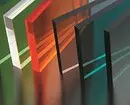
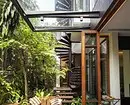
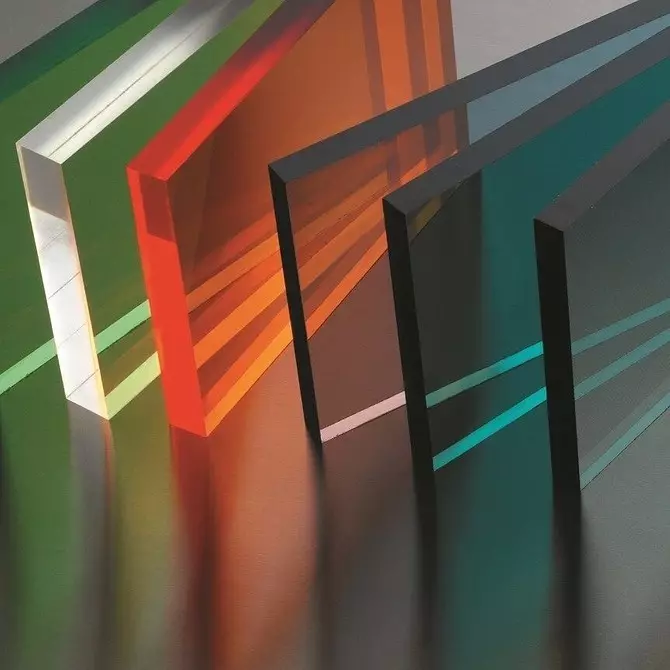
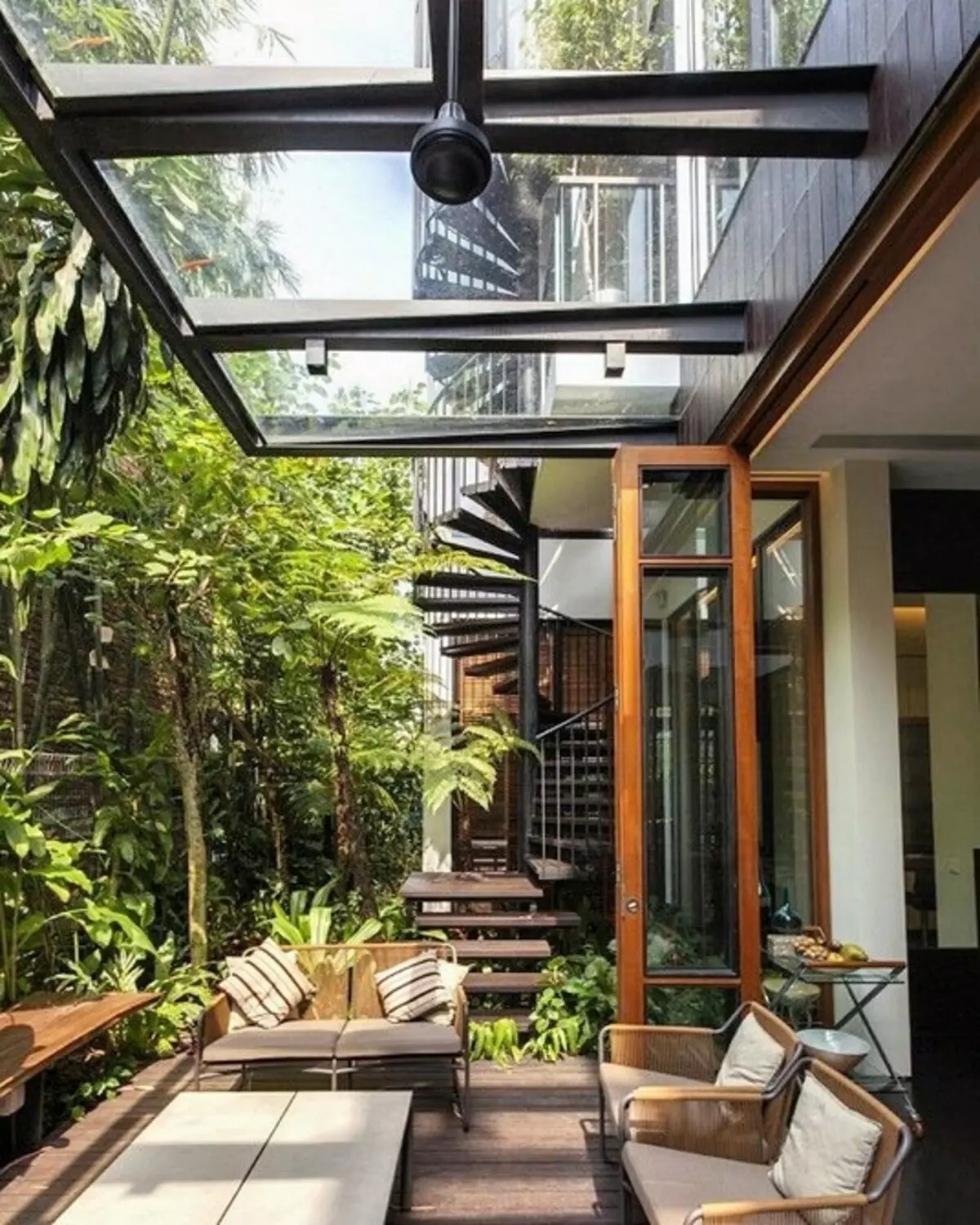
Cellular
The inner space of such sheets is divided into cells, so they can be called hollow. These cells may have a different form. Cellular polycarbonate can also bend. In this case, you will need a cloth with rectangular cells.Pros:
- Cellular canvas weigh less than monolithic, but at the same time provide sufficient sound insulation and durability of the canopy.
- They are withstanding not only strong mechanical loads, but also temperature drops (depending on the thickness and quality of the material).
- Durable. The shelf life of such a design is 6-15 years.
- If the design is attached to the house or bath, the load on them will be minimal.
Minuses:
- With incorrect installation, moisture can get inside the cells.
- Due to high humidity inside the design, condensate often accumulates.
Water itself does not destroy plastic, but upon the occurrence of frosts, such panels can crack. In addition, constant moisture contributes to the appearance of mold or moss, which is very difficult or impossible to remove. True, this disadvantage can be eliminated if you take the cells. The upper part is closed with self-adhesive moisture-resistant film. Low-perforated ribbon and end profile.
Look at the photo, how such an element looks like. It not only protects the design, but also gives it a more accurate look.
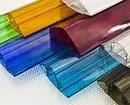
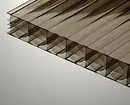
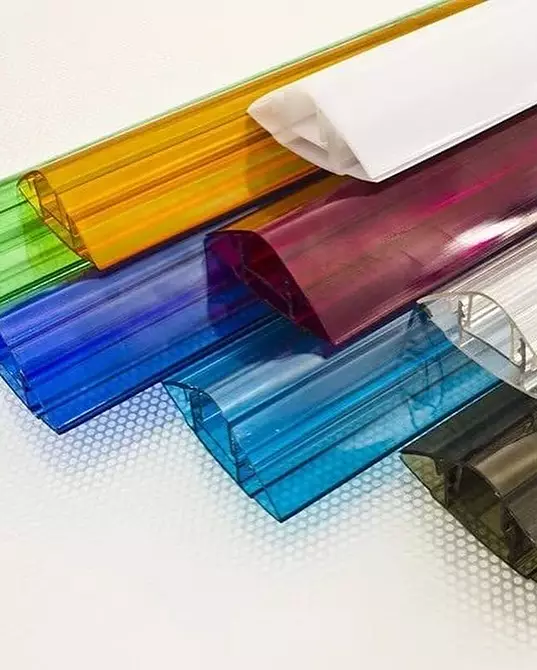
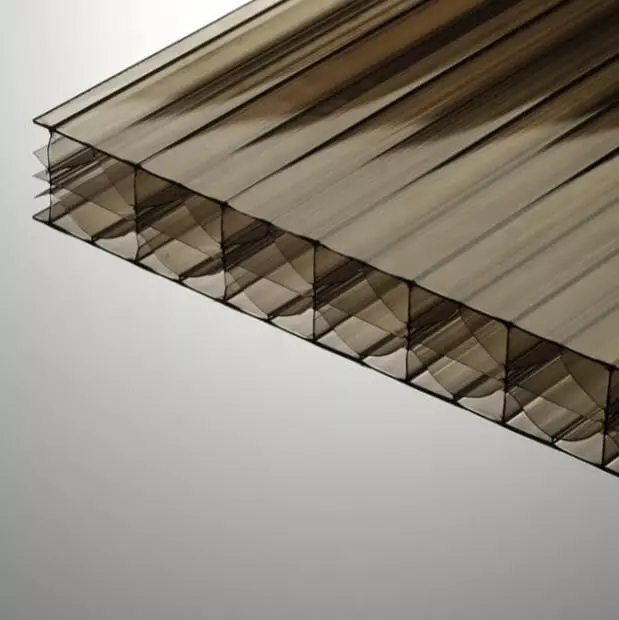
What thickness polycarbonate is better to use for a canopy
The next step is to choose size. From how planning you plan to do, the thickness of the plastic depends. Do not choose the thinnest sheets - you have to install more crates and the whole design will be heavy and expensive. The most fat material is also not always the best option. He has a smaller bend radius and need a solid framework.Consider the form of construction. The straight roof in the snow area requires at least the middle overlapping thickness. Slim can crack under the weight of snow.
Thickness of monolithic products
Depending on the design of the structure, monolithic sheets are used from 6 to 12 mm.
- 6-8 mm. The panel of such thickness is a guarantee of the stability of the structure. They are withstanding strong wind, and snowfall. From such products make automobile sites, visors, big gazebos.
- From 10 mm. This thickness is suitable for serious mechanical and climatic loads.
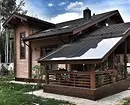
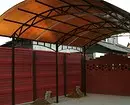
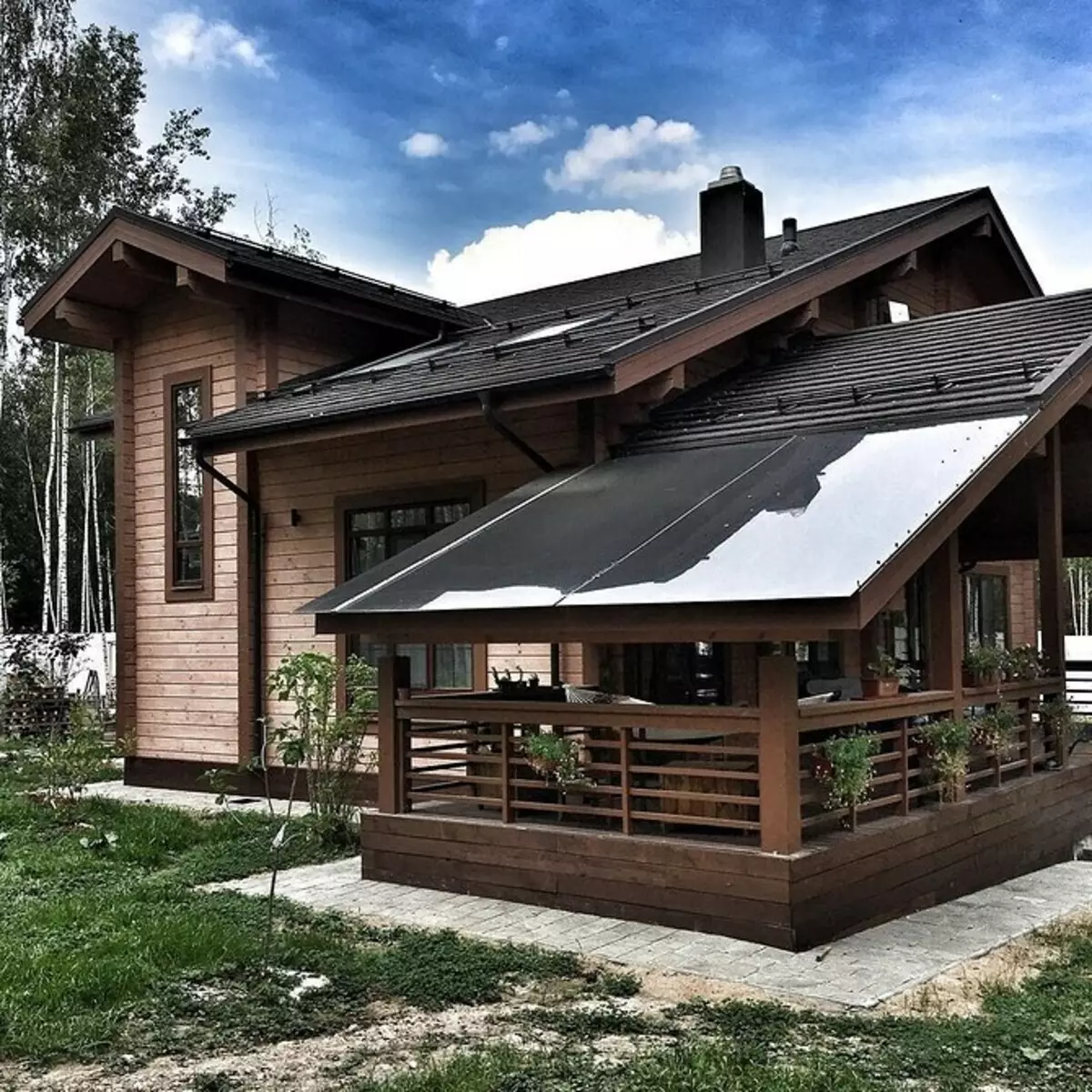
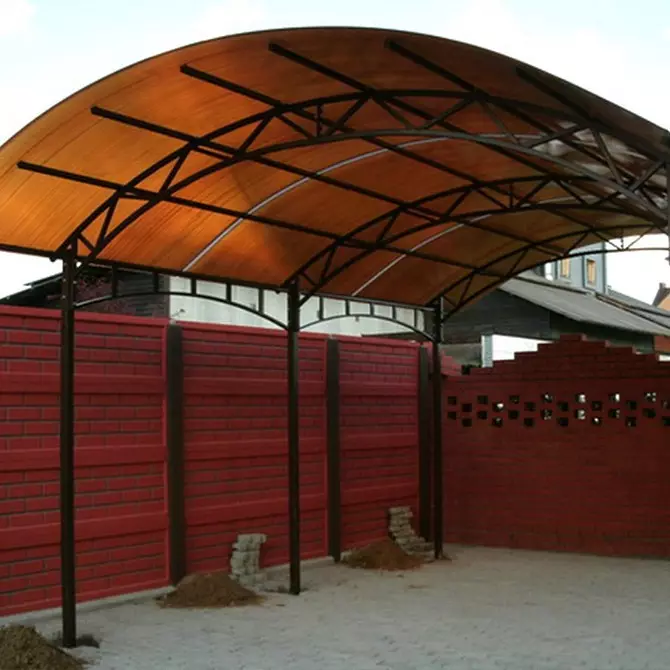
Thickness of cellular products
For a cellular material, the recommendations almost do not change.
- 4 mm. For small visors above the porch or rounded greenhouses.
- 6-8 mm. For pools, automotive sites, arbors.
- From 10 mm. For large buildings and terrain with strong winds, snowfall.
The thickness depends on the configuration of the cells. The worst - 5x, 5w, 3x (from 16 to 25 mm). Inside them from three to five layers bonded by diagonal and straight ribs forming the cells. The optimal size is 3H (6, 8, 10 mm). Thin, two-layer sheets with straight rigids - 2H (1-4 mm).
What color to choose for a canopy
When the technical characteristics dealt with, it remains to choose external. After all, it is necessary that the construction is not only durable, but also looked good. If desired, you can find yellow, red, blue, black, blue, green, turquoise, brown, pink plastic on the construction market.
The most running option is transparent and translucent panels. The buildings of them look appropriate almost in any design, since they do not attract too much attention. Monolithic visors and roofs can be decorated with wrought iron or wooden elements.
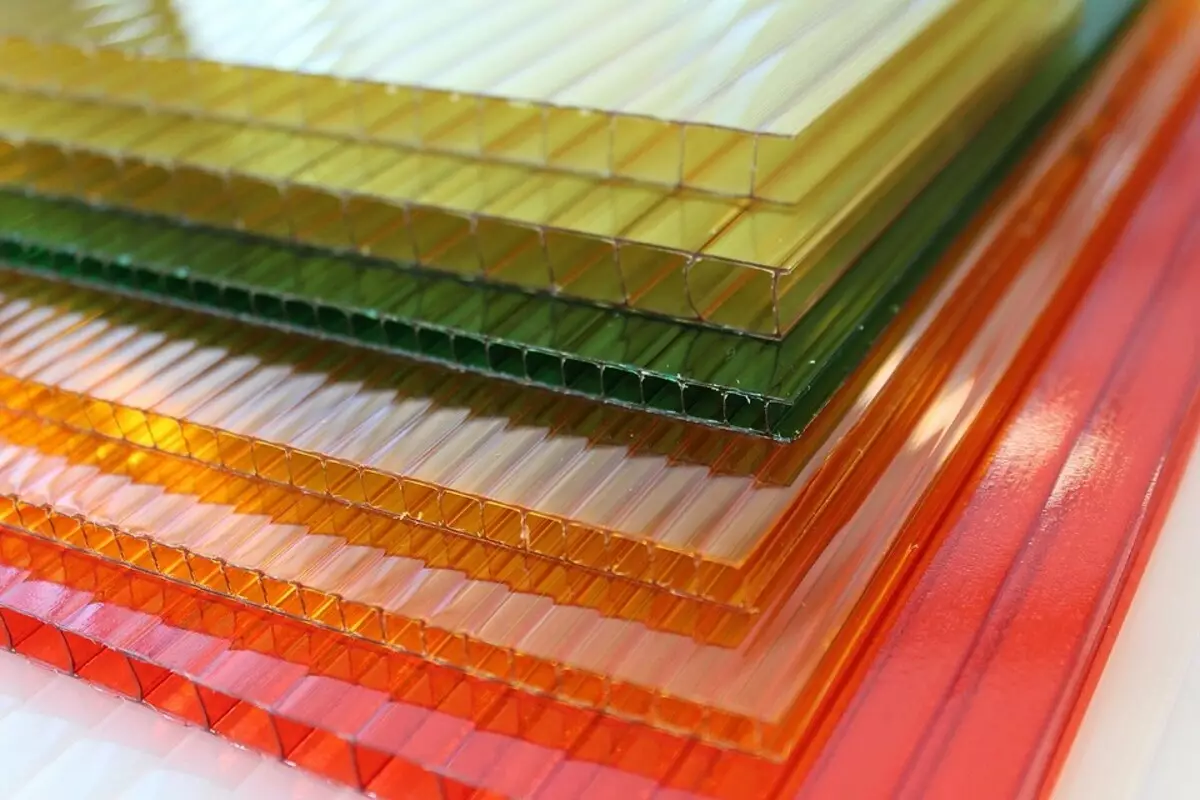
And what color of the polycarbonate is better to choose for a canopy if you want to add brightness to the site? First of all, it is necessary to repel from the already existing buildings. An extension to the residential house or bath is advisable to make tone-in-tone wall, roof, platbands or other items. It is desirable that even objects standing apart from each other are combined.
The second thing is important to take into account - distortion of color. Under red, blue and yellow plastic, all items will have the appropriate shade. Less distortion under green, white, bronze overlap. Silver or black modules are suitable for maximum shading. In hot weather under them will be the coolest. Especially relevant is for the automotive platform, arbors, swings. The roof over the pool is usually made turquoise or blue. These colors give the water a beautiful shade.
Polycarbonate visor actors
- When cutting modules, consider such a property of the material as an extension under the influence of the Sun - leave the gaps in the frame for compensation.
- During cutting or sawing plastic, press it tightly to the surface to minimize vibration.
- Do not remove the protective film from monolithic panels until the end of construction is not to scratch them.
- High-quality products on one side are covered with a protective UV layer. This side is protected by a film with inscriptions. When installing, it must be outdoor.
- Film is better to shoot before installing or after the end of all works.
- In cellular visors, cells should always be located vertically, so that condensate does not accumulate.
- If the visor is shut-down under the roofing type roofs, install it at an angle at least 5 °.
- Use simple water and a soft sponge or fabric to clean the surface. You can add soap, dishwashing detergent, spray for glass with alcohol content. You can not use ammonia, acetone, ethers, sharp objects.
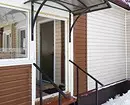
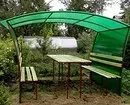
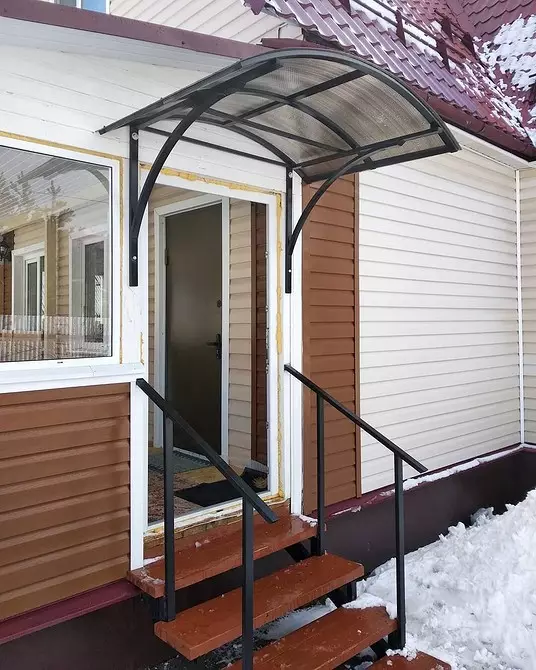
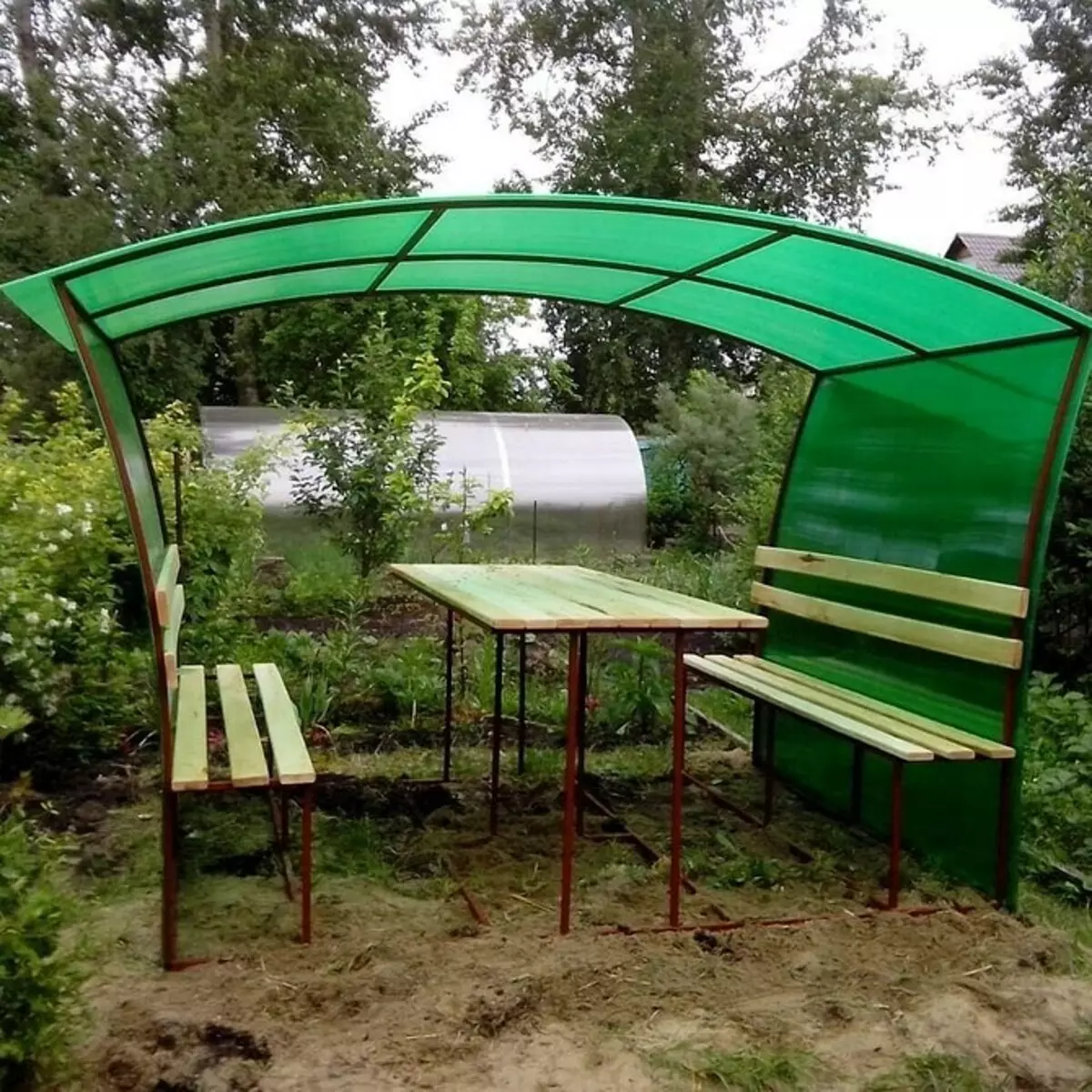
Output
What polycarbonate is better to choose for a canopy:
- If you need a durable material for open areas with very strong winds, snowfalls, storms, it is better to stay on a monolithic polycarbonate. He is suitable for those who are planning to install a decorative visor or gazebo.
- The monolithic panels are ideal for the formation of round structures, as it is easily flex.
- If you want to save, and the plot is closed from a strong wind - the cellular material is suitable. It is also a good option for unstable, light bearing frames. The joints need to be isolated from water so that there is no condensate and mold inside. For bent roofs, choose products with rectangular cells.
- For small and rounded buildings, there are enough panels with a thickness of 4-6 mm. Big roofs above the pool, car, gazebo, the terrace is better to do thicker - 6-8-10 mm.
With color everything is simple. The most common option in our sites is transparent canopies. They retain natural lighting and at the same time protect against rain and snow. You can put the platform with black, silver or bronze overlaps. All other shades are chosen based on the design of buildings that are already built.




